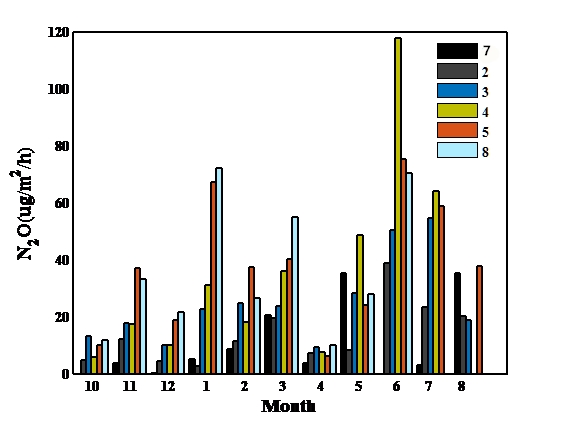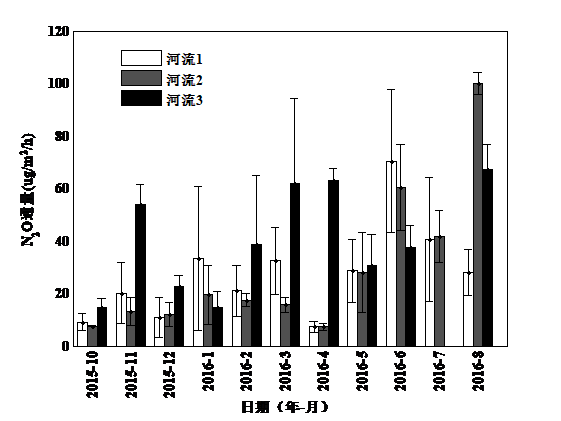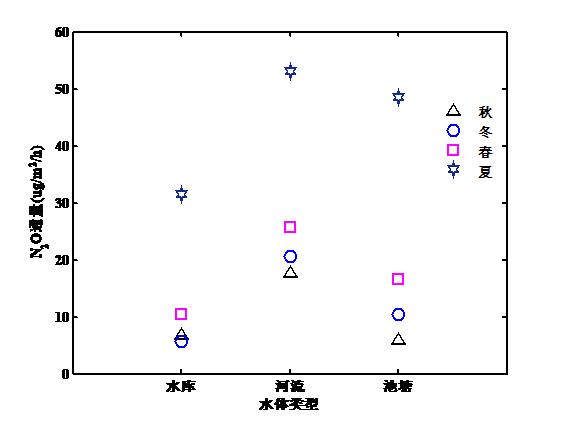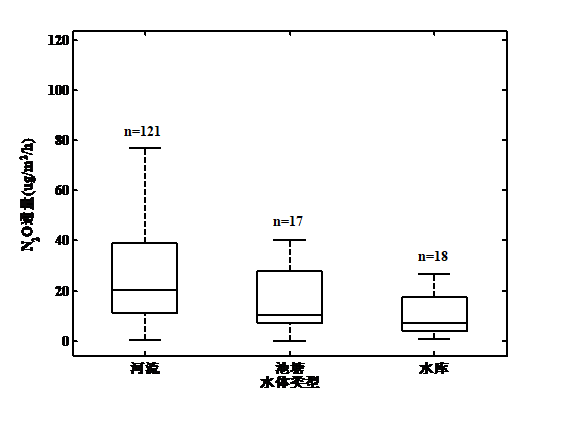论文总字数:20277字
目 录
摘要 1
Abstract 2
0引言 1
1 材料与方法 4
1.1 研究区域概况 4
1.2. 采样点设置 4
1.3 样品采集与分析 5
1.3.1实验分析方法 5
1.3.2 水样采集 5
1.3.3 水样预处理 5
1.4 气象数据和水质数据的获取 6
1.4.1 气象数据的获取 6
1.4.2 水质数据的获取 6
1.5 数据计算与统计 6
2 结果分析 7
2.1 河流1的6个采样点观测时间段内的N2O通量时间变化特征 7
2.2 三条河流观测时间段内的N2O通量的时间变化特征 8
2.3 三种水体观测时间段内的N2O通量的季节变化特征 9
2.4 三种水体N2O通量总量的比较 10
2.5 N2O通量与水质因素和气象因素的相关性分析 11
3 讨论 11
3.1 句容水库农业小流域水体N2O通量特征变化分析 11
3.2 句容水库农业小流域水体N2O通量特征与其他研究结果的比较 12
4 结论 12
参考文献 13
致谢 16
句容水库农业小流域水体N2O通量特征研究
唐虎
,China
Abstract: In this paper, the water balance of N2O in greenhouse was studied by using the water balance method. The data of N2O concentration and related environmental factors in the greenhouse were obtained from the observation of the one-year sampling in October 2015 - September 2016. The results show that: (1) The N2O flux of the N2O flux is more obvious during the observation period for the river 1 of the water sample, and the N2O flux is the highest in the summer The value of N2O flux in winter is also higher in January. In addition, the sampling points in the upstream area of the river show a higher degree of varying degrees. (2) For the analysis of the temporal variation characteristics of the three rivers in the water body, it can be seen that the N2O flux is higher in July (Summer). The change of N2O flux in the three rivers is different. Since the rivers are mainly farmland, the N2O emission is stable during the observation period. For the rivers 1 and 2, the N2O flux increases obviously in summer The(3) For the three types of water bodies, namely, reservoirs, rivers and ponds, due to differences in water quality and meteorological conditions, the N2O fluxes vary greatly in different seasons. The N2O flux of the river is the largest in both spring and summer. While the reservoir and pond, N2O flux maximum is in the summer, other season N2O flux difference is small, the reservoir performance is more stable. However, the trend of N2O flux in spring, summer, autumn and winter is basically the same. (4) For the comparison of the total N2O fluxes of the three water bodies, the N2O flux of the river is the largest in terms of flux fluctuation, followed by the pond and the reservoir is the smallest. Discrete point of view, with the river N2O flux of the largest degree of dispersion, followed by ponds, the smallest reservoir. (5) In terms of water quality, the N2O emission flux was negatively correlated with dissolved oxygen, and it was not significantly related to the factors such as oxidation-reduction potential, PH value and conductivity. In terms of meteorological factors, N2O emission flux was related to water temperature, wind speed and The temperature was positively correlated, and reached a significant level.
Key words: N2O, Water body, Time variation characteri
0引言
近年来,由温室效应引发的全球气候变暖逐渐引起全社会尤其是科研工作者的广泛关注,在经济发展突飞猛进的今天,其副产物温室气体在大气中的含量每年都在升高,其中成分最高、影响最大的温室气体是二氧化碳(CO2)、甲烷(CH4)和氧化亚氮(N2O),根据查阅相关数据,2015年全球CO2、CH4和N2O平均浓度分别达到了396ppm、1886ppb和325.9ppb[1]。温室效应的日益加重已经逐渐成为全球最为关注的环境问题。在保持经济发展和限制与减少温室气体的排放方面寻求一个平衡点已经成为一个刻不容缓的议题[2]。
长期以来,社会普遍认为,温室气体排放量逐年增长的主要原因在于人类的排放活动,这些活动加剧了大气中的碳收支不平衡,即碳失汇(Missing carbon sink),以前的研究表明,碳失汇主要发生在陆地生态系统中,但是近年来的研究表明,经由水体中排放进入大气中的温室气体也占有很大的比重,这些研究表明在温室气体循环的的过程中,水陆生态系统发挥着很重要的作用;关于N2O,人们认为其排放主要源于生物质燃烧和农田土壤释放,却忽略了水体中的间接排放,而现在研究表明,水生态系统也是氮的源与汇[3]。
从目前的研究看,其主要研究对象集中在河流[4]、水库[5]、湖泊[8]等地,对农业小流域的研究相对较少[3]。农业小流域包括水库、农田、池塘和河流,是一个集水生态系统和农田系统为一体的系统,其中温室气体排放的机理机制目前仍未研究得很透彻。以我国来说,农业小流域水体主要位于长江以南地区,农业以水稻种植为主,土壤肥沃,河汊纵横,常年处于亚热带季风气候之下,雨热同期,而且雨量和光照都比较充足,又由于其受到农业发展和人类活动的强烈干扰,可能会产生大量的温室气体排放[11],成为温室气体排放源之一。因此积极开展对于农业小流域水体温室气体排放通量变化规律及其影响因素的研究具有重大意义。
国内外有关科研工作者对于温室气体的观测方法和水体温室气体排放的影响因素进行了颇为可观的研究,经查阅相关文献,对当前对于温室气体排放的监测方法极其相应的研究进展与成果进行了简要的总结。
剩余内容已隐藏,请支付后下载全文,论文总字数:20277字
相关图片展示:
该课题毕业论文、开题报告、外文翻译、程序设计、图纸设计等资料可联系客服协助查找;






